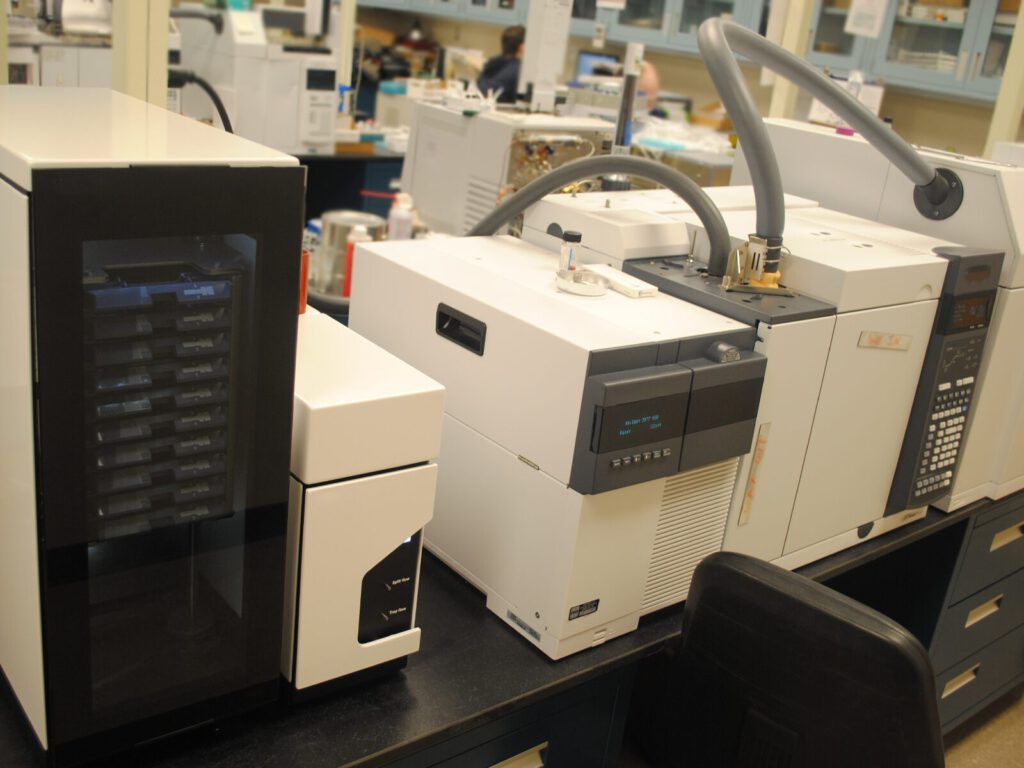ATS performs testing to a variety of chemical analysis methods, including several techniques to assist our clients with contamination test services. Nearly as important as the initial selection of design materials, verifying materials can greatly change the final product’s performance and success. Contaminants can change the composition (and thus characteristics) of the product and can undermine the performance of even the most artfully chosen materials.
Manufacturers with a contamination problem can potentially see their products fail more often and more quickly than anticipated due to their design material’s compromised chemical or mechanical properties. As a result, production, quality, product performance, and sales may be negatively impacted.
Contamination testing helps clients verify materials and identify potential contaminants. With the insight our chemical analysis lab offers, companies can reformulate their product, change production methods, or carry on confidently to the assembly line as appropriate.
ATS’ Most Commonly Requested Contamination Test Services
ATS utilizes several techniques (as needed) to identify contamination concerns. Contaminants can present themselves in a litany of ways, ranging from fibers to particles to stains to residues to odors. Our skilled chemists choose the most applicable method based on the material to be analyzed and the nature of the contamination. The chemical analysis lab employs the following methods and is ISO/IEC 17025:2017 accredited by the A2LA to perform each of them to applicable standards where noted:
Ion Chromatography (IC)
Useful for identifying contamination consisting of charged particles. In addition to being general contaminants, common anions, including chloride, sulfide, nitrate, nitrite, and fluoride, can be precursors to corrosion and cause defects in electrical performance. Ion chromatography is an effective and sensitive instrumental technique that allows the separation and quantification of ionic contamination.
IC analysis requires a liquid sample; however, solid components can be measured for surface contamination by specialized rinsing and wiping techniques. IC can be combined with Parr oxygen bomb preparation to determine total contamination in certain solid matrices. IC is incredibly sensitive, allowing detection to parts per billion (ppb) levels in some instances. This sensitivity makes it an ideal technique for contamination analyses.
Our lab is ISO/IEC 17025:2017 accredited to perform IC according to ASTM D4327.
Scanning Electron Microscopy / Energy Dispersive Spectrometry (SEM/EDS)
SEM/EDS is a common initial test during contamination analyses. Since the elemental analysis is performed in conjunction with high magnification electron microscopy, it is particularly well suited for the analysis of particulate contamination and in situ analysis of site-specific contamination. SEM/EDS is ideal for those cases where a picture is worth a thousand words – high magnification imaging and detailed size measurements can be reported along with more complex data such as color-coded elemental mapping.
Our lab is ISO/IEC 17025:2017 accredited to perform SEM/EDS according to ASTM E1508.
Inductively Coupled Plasma / Atomic Emission Spectroscopy (ICP/AES)
ICP/AES is an especially flexible methodology, commonly used in analyzing metal, polymer, liquid, powder, and many other sample matrices. This makes ICP/AES analysis ideal for the evaluation of a variety of products for trace elemental evaluation. ICP/AES is the go-to method for determining lead content in consumer products and is equally suited to determine both the composition and the purity of raw materials. Liquid samples may be analyzed directly, while solid samples are digested with mixed acids to determine their elemental composition, including trace element contamination down to part per million (ppm) levels.
Our lab is ISO/IEC 17025:2017 accredited to perform ICP/AES according to ASTM E1479 and ASTM E1613.
Fourier-Transform Infrared Spectroscopy (FTIR)
FTIR analysis is the go-to technique for identifying non-metallic contamination such as oil, grease, plastic, and rubber. FTIR allows comprehensive compound identification capabilities for these material types and is well-suited to both the identification of complete unknowns and comparison of contaminants to suspected source materials. ATS can perform FTIR analysis by the standard transmission technique using a microscope and via attenuated total reflectance (ATR). Analysis flexibility is critical in order to properly test and identify the vast majority of potential contaminants.
Our lab is ISO/IEC 17025:2017 accredited to perform FTIR according to ASTM E1252.
Other Relevant Methods
While clients typically request one of the tests above to detect and identify potential contaminants, the ATS chemical analysis labs can perform several other applicable methods when relevant to the client’s scope of testing. They include the following:
- Gas Chromatography-Mass Spectrometry (GC/MS)
- Liquid Chromatography-Mass Spectrometry (LC/MS)
- Computed Tomography (CT) Scanning
- Light Microscopy/Cleanliness
- X-Ray Diffraction (XRD)
About ATS
Since our founding in 1967, ATS has offered testing, inspection, and consulting engineering capabilities of the highest caliber. In the 55+ years since, we have grown abundantly; once a fledgling group of three engineers serving local businesses from our founder’s basement, ATS has become a multidisciplinary firm that employs several hundred chemists, technicians, scientists, investigators, inspectors, and professional engineers to serve clients operating in countries around the globe.
Among the many we regularly serve, the following industries most benefit from our expertise in contamination testing:
- Consumer Products
- Manufacturing
- Healthcare/Medical
- Insurance/Legal
- Power Generation
Quality is Our Policy
Our chemical analysis lab performs every contamination test according to our quality assurance program. We have registered our system with ISO 9001:2015 to deliver a truly comprehensive customer service experience. This distinction means that an approved auditor affirms that our quality management system complies with the internationally recognized standard outlining effective quality assurance principles. By following these guidelines, ATS has primed itself for continuous quality improvement.
We take a variety of measures to ensure our clients enjoy the best experience possible:
- Clear, accurate, and detailed reporting
- Quick turnaround rates
- Support from customer service personnel and relevant testing experts
Contact Us
If your company needs the services of a proven contamination testing provider, contact ATS today. Call +1(888) 287-5227 to speak with a representative about your needs or click here to submit a request online.



